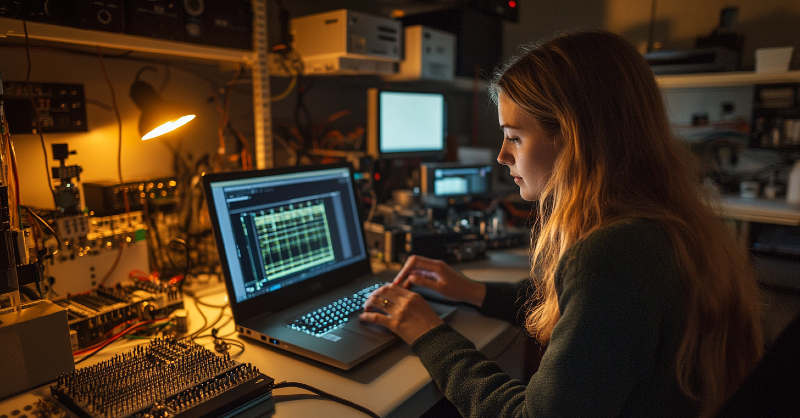Quantum computing promises to revolutionise industries from medicine to energy, but the road to scalable systems remains blocked by an overlooked obstacle, which is wiring. French deeptech startup Isentroniq is tackling this hidden challenge head-on, developing next-generation wiring that eliminates the heat, cost, and space bottlenecks limiting quantum computers today.
The challenge behind quantum dreams
Quantum computers rely on qubits, which are tiny quantum bits that must be cooled near absolute zero to remain stable. But controlling them requires thousands of ultra-thin wires running through cryogenic chambers called dilution refrigerators. Each wire introduces heat, takes up space, and adds cost.
This creates a structural deadlock. Current systems can manage only a few hundred qubits before reaching their physical limits. Scaling to millions of qubits, the threshold needed for practical, fault-tolerant quantum computing, would demand massive facilities and investments worth billions. The sheer complexity and energy costs make this approach unsustainable.
Isentroniq’s innovation directly confronts this wiring crisis, promising a way to integrate 1,000 times more qubits within existing cryostats. By reducing heat transfer, physical bulk, and cabling costs, the company’s breakthrough could cut the price of a million-qubit machine from tens of billions to about €50 million, a transformative leap toward commercially viable quantum computing.
Funding to accelerate scalable quantum hardware
To power its mission, Isentroniq has raised €7.5 million in fresh funding led by Heartcore, with participation from OVNI Capital, Kima Ventures, iXcore, Better Angle, Epsilon VC, and support from Bpifrance and the French National Research Agency (ANR) under the France 2030 initiative.
This capital will help the Paris-based company expand its engineering team, advance its proprietary wiring technology, and forge industrial partnerships to deliver a plug-and-play infrastructure solution for quantum computer builders. Adopting a fabless model, Isentroniq designs the architecture while relying on specialised global partners for production. This approach ensures industrial-grade quality and accelerates deployment without the burden of heavy capital expenditure.
Founders with deep science and execution power
Behind Isentroniq are two founders whose backgrounds blend scientific excellence with commercial execution. Dr. Paul Magnard, a PhD from ETH Zurich and former lead architect at Alice & Bob, brings deep expertise in superconducting qubits and multiple publications in Nature. His co-founder, Théodore Amar, previously worked at Bain & Company and Hilti, bringing a sharp focus on go-to-market and operational scaling.
Together, they aim to solve one of quantum computing’s most stubborn infrastructure problems. As tech giants like Google, IBM, Amazon, and Rigetti pursue million-qubit milestones, Isentroniq’s solution could become the enabling layer that makes those ambitions achievable.
Isentroniq is redefining quantum hardware by building the wiring backbone for large-scale quantum computing. Its pioneering technology eliminates the key bottlenecks of heat, cost, and space, unlocking the path from thousands to millions of qubits.
Looking ahead, the company plans to expand its team by 2026, opening roles for quantum, mechanical, and RF engineers, alongside software specialists.
“Today wiring is the #1 bottleneck to scale-up superconducting quantum computers. Our mission is to turn it into an accelerator,” said Paul Magnard, co-founder and CEO of Isentroniq. “With this funding, we will industrialise a wiring technology capable of supporting million-qubit machines and make quantum computing truly useful for science, industry, and society.”

